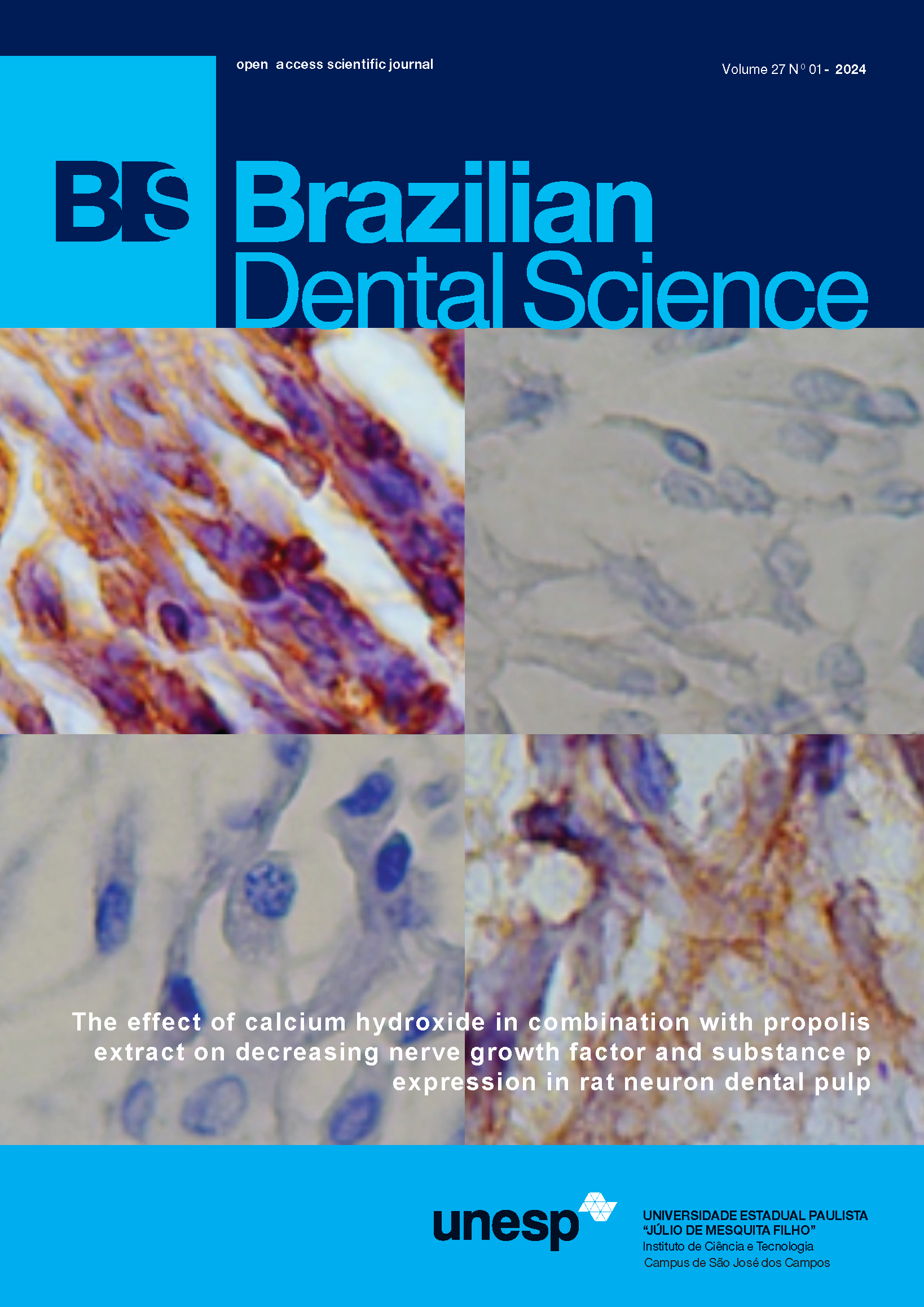Longitudinal study of removable partial dentures and hygiene habits
DOI:
https://doi.org/10.14295/bds.2007.v10i3.281Abstract
The removable partial dentures (RPD) are used to reestablish the phonetics, aesthetics and masticatory function for partially dentate patients, mainly those who compound the Brazilian poorest population, since RPD presents a relatively low cost. The rehabilitation gone to be successfully when besides the planning, the dentist orientate hygiene habits to the patient, and proserve the case. The present paper evaluates hygiene habits and RPD planning among a sample of RPD wearers, in a cross-sectional design. A questionnaire was applied and a clinical examination was performed by two previously calibrated examiners. The sample was composed by 83 patients, and 25 were males. It was verified that 49.4% of the patients brush their teeth three times per day and that 28.9% took approximately 4 minutes for each teeth brushing, 95.2% use other hygiene resources, besides toothbrushing, as dental cream (98.7%), dental floss (79.7%) and mouthrinses (55.7%). However 56.6% showed bacterial plaque and 21.7% presented caries at clinical exam. About the dentures, 74.7% was definitive RPD and 96.4% showed bilateral design. The requisites of stability, retention, occlusion and aesthetics was classified as good, in the majority of the cases; the hygiene was classified as good to regular. In 24% of the dentures, the base was deformed or fractured, 50.6% presented artificial teeth with detritions. Instead of patients’ adequate oral hygiene habits and satisfaction with RPD, more comprehensive explanations about oral care and more frequent follow-ups should be considered to improve plaque index and periodontal health among RPD wearers.Downloads
Published
2010-08-12
Issue
Section
Clinical or Laboratorial Research Manuscript




